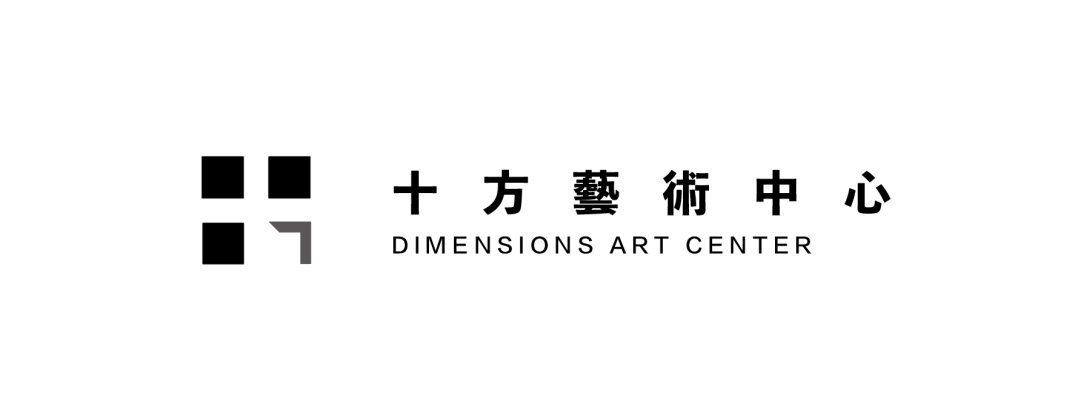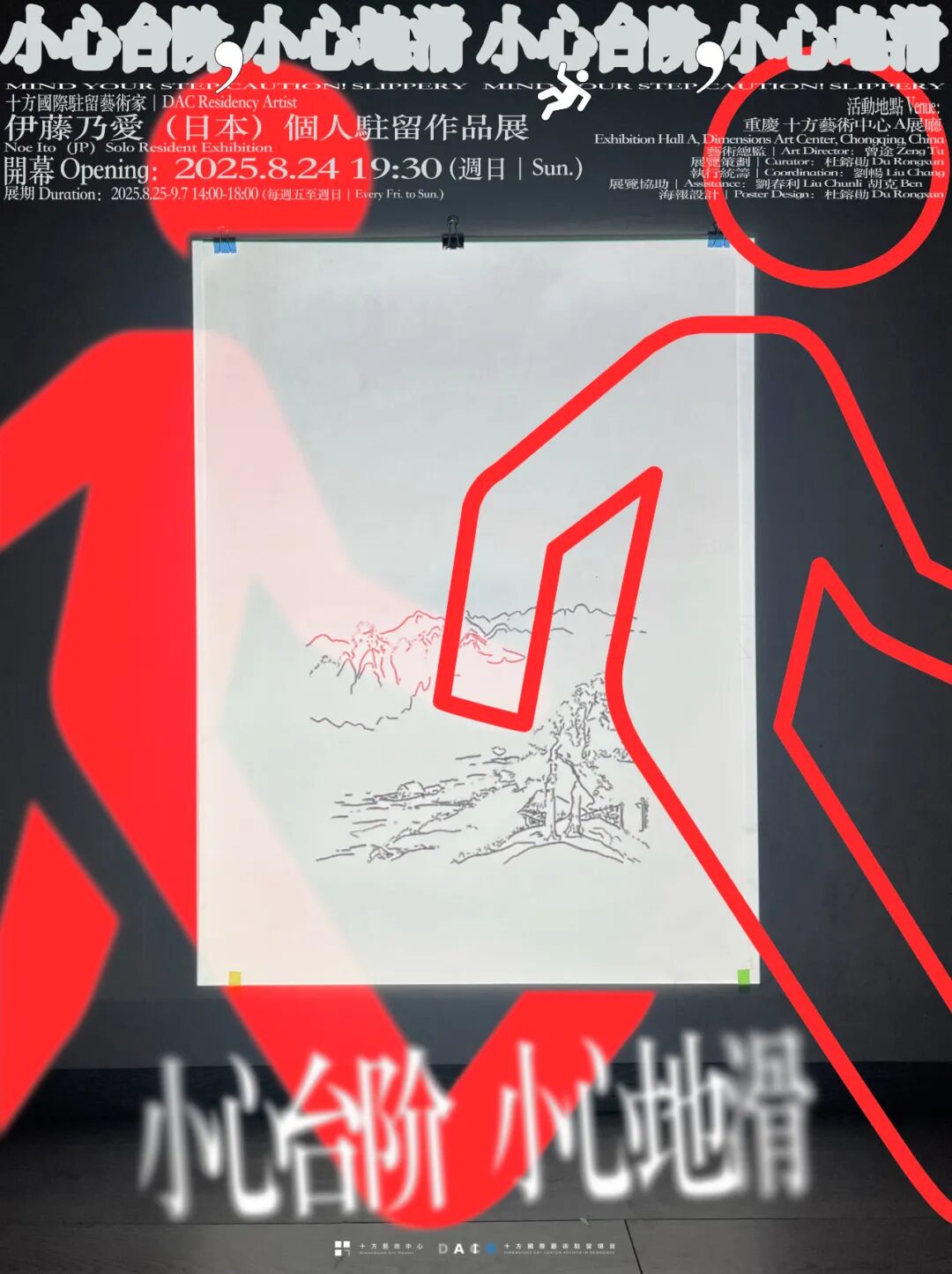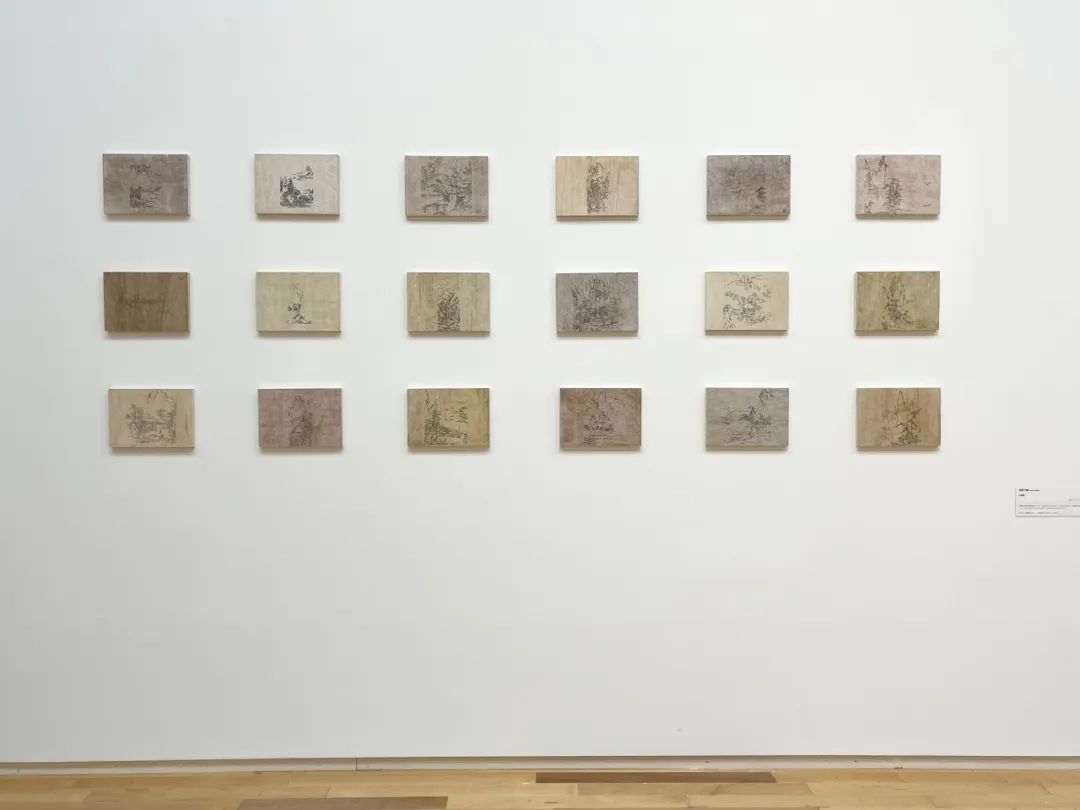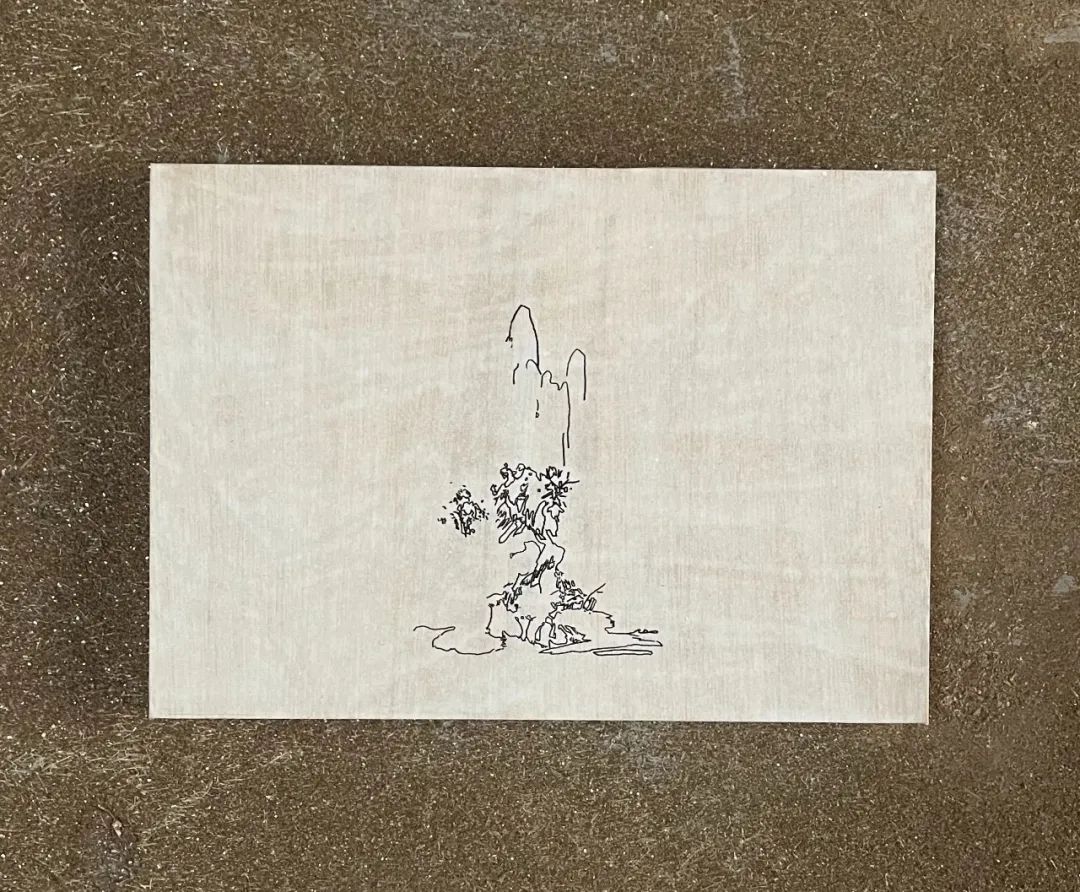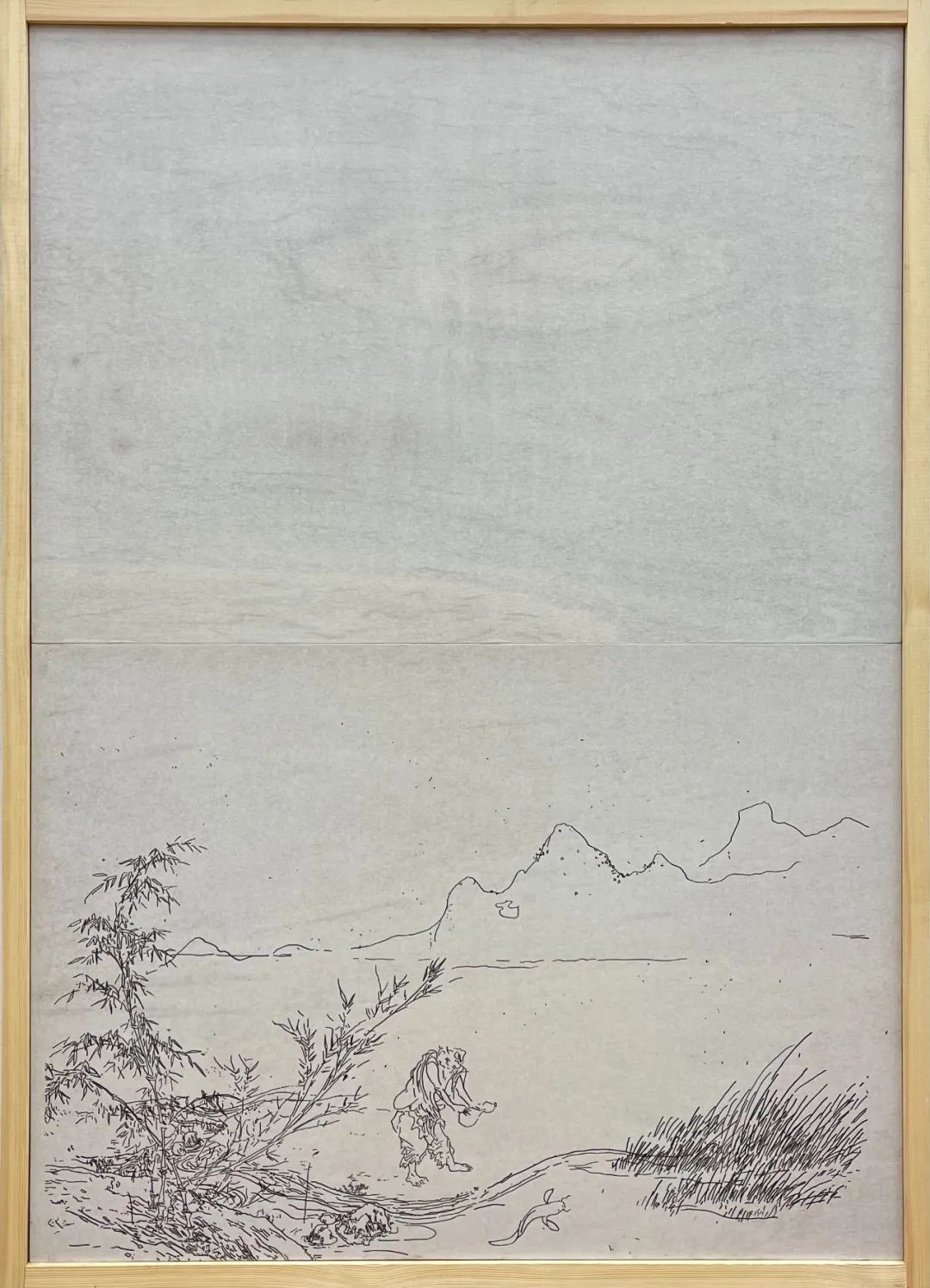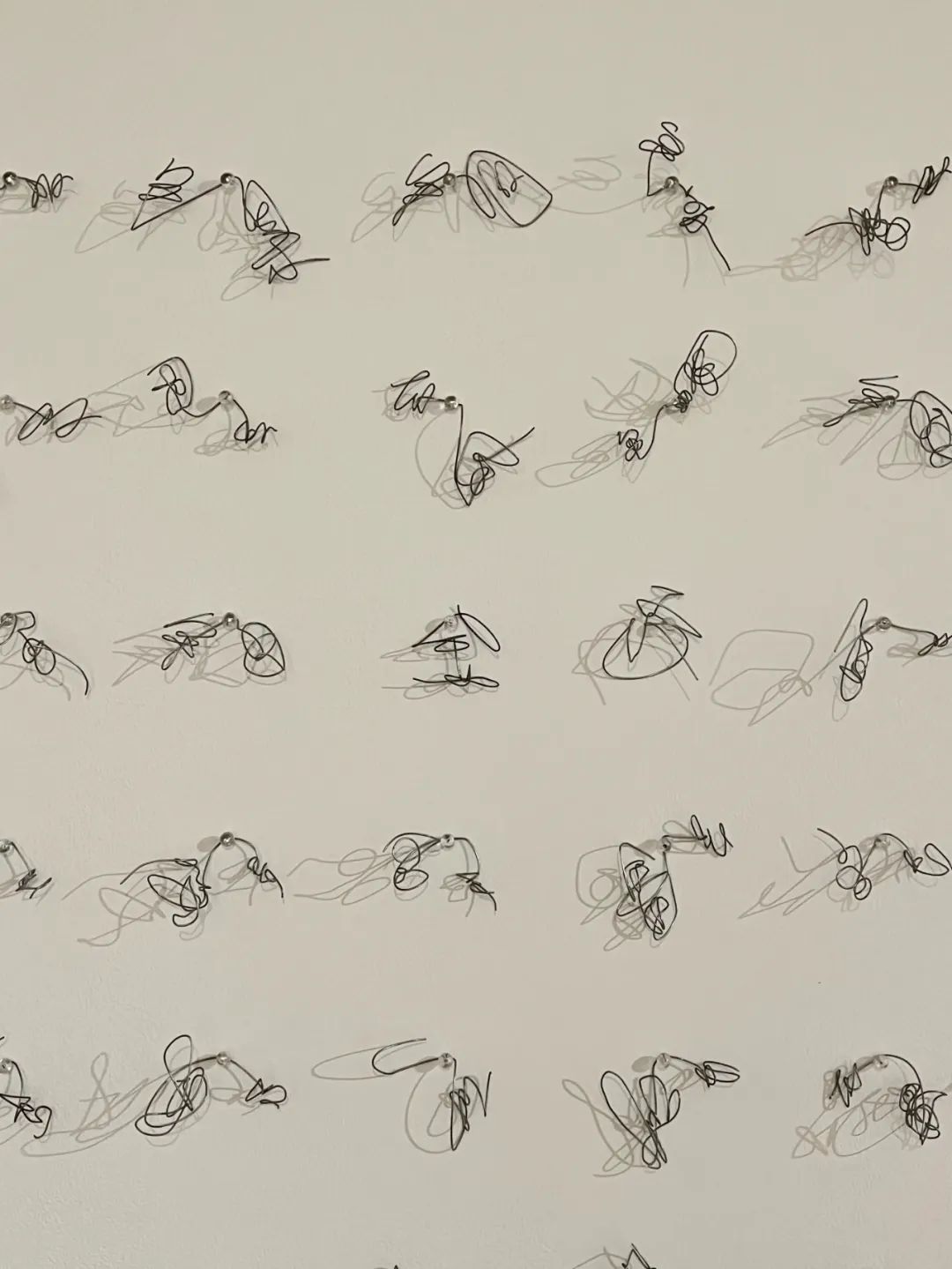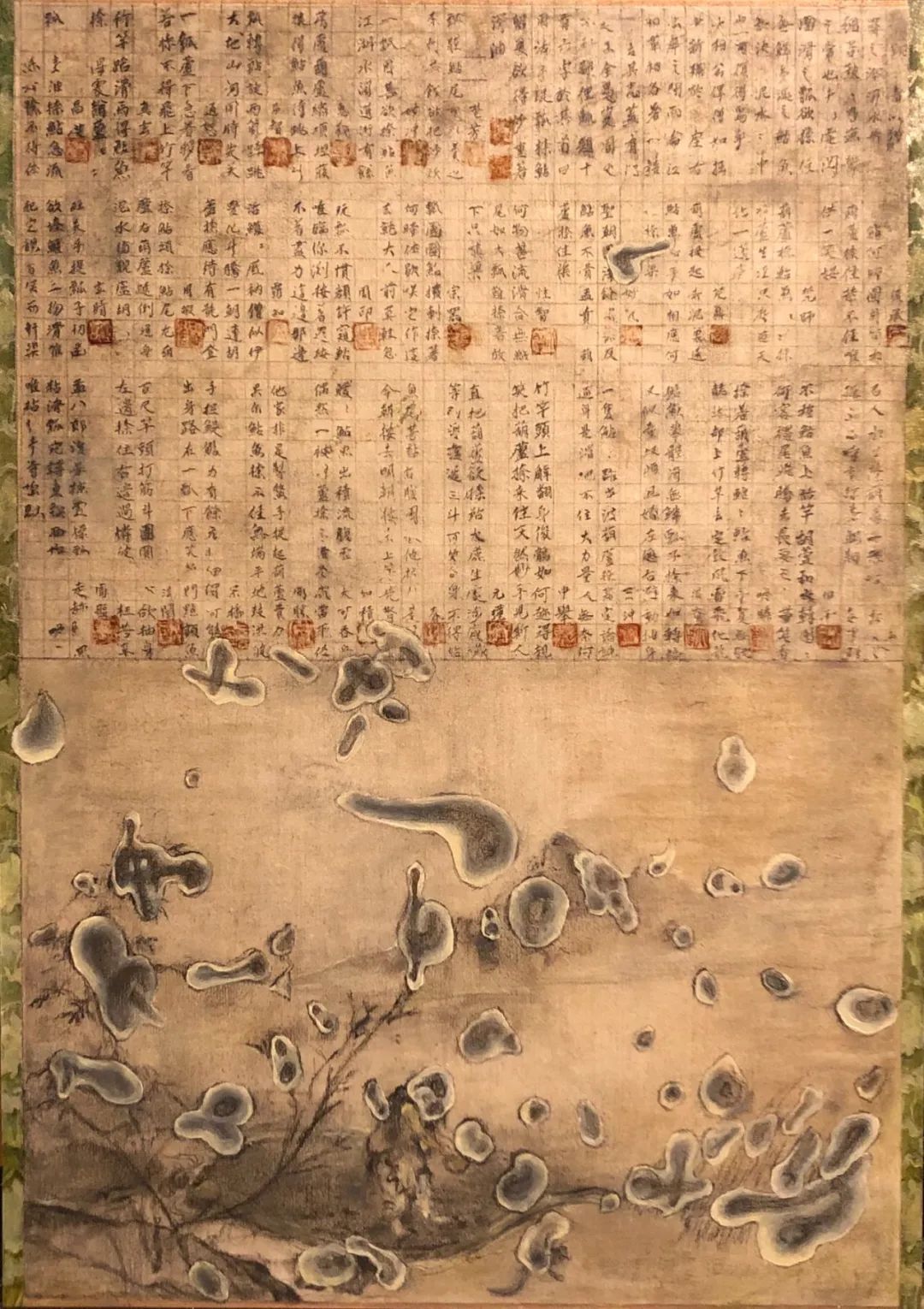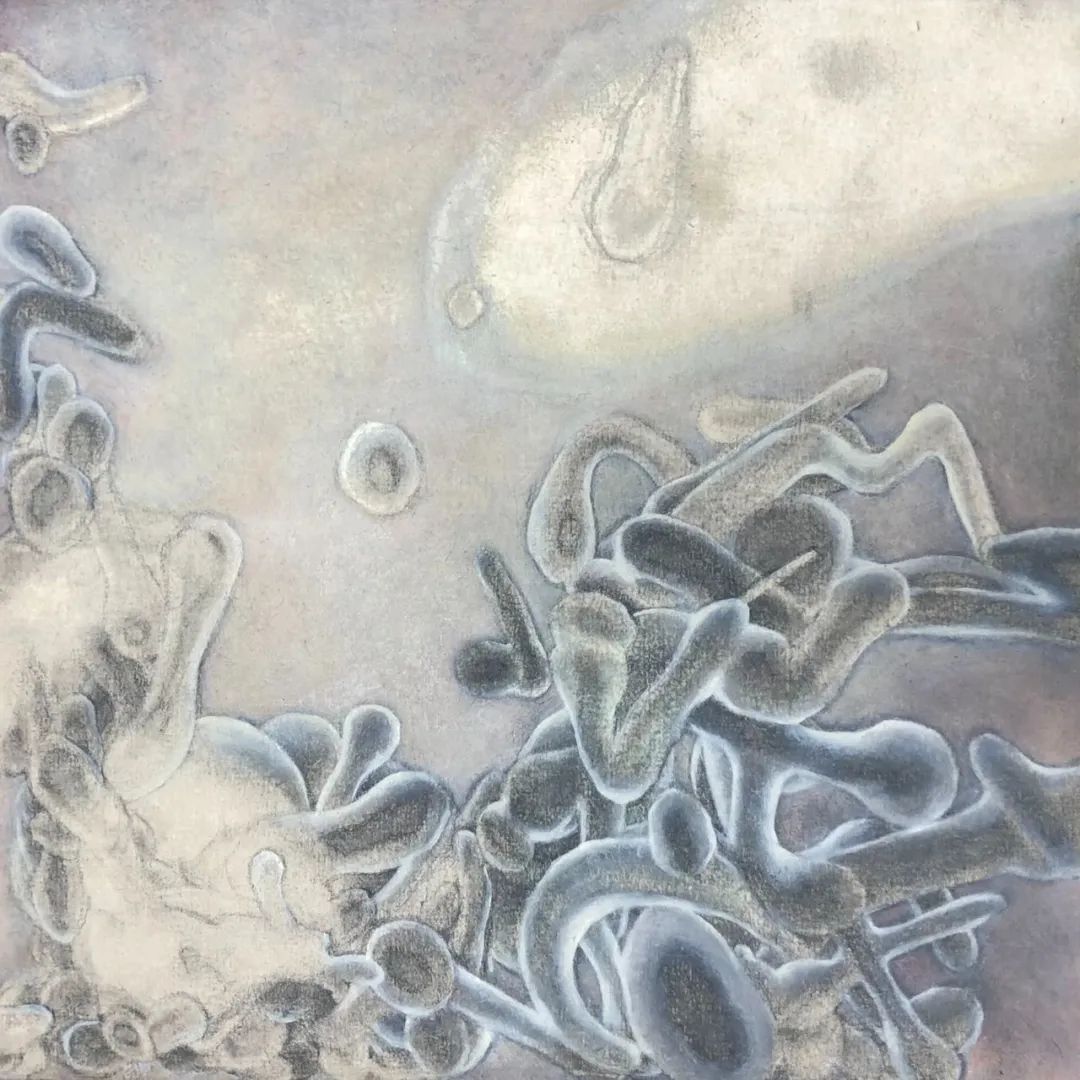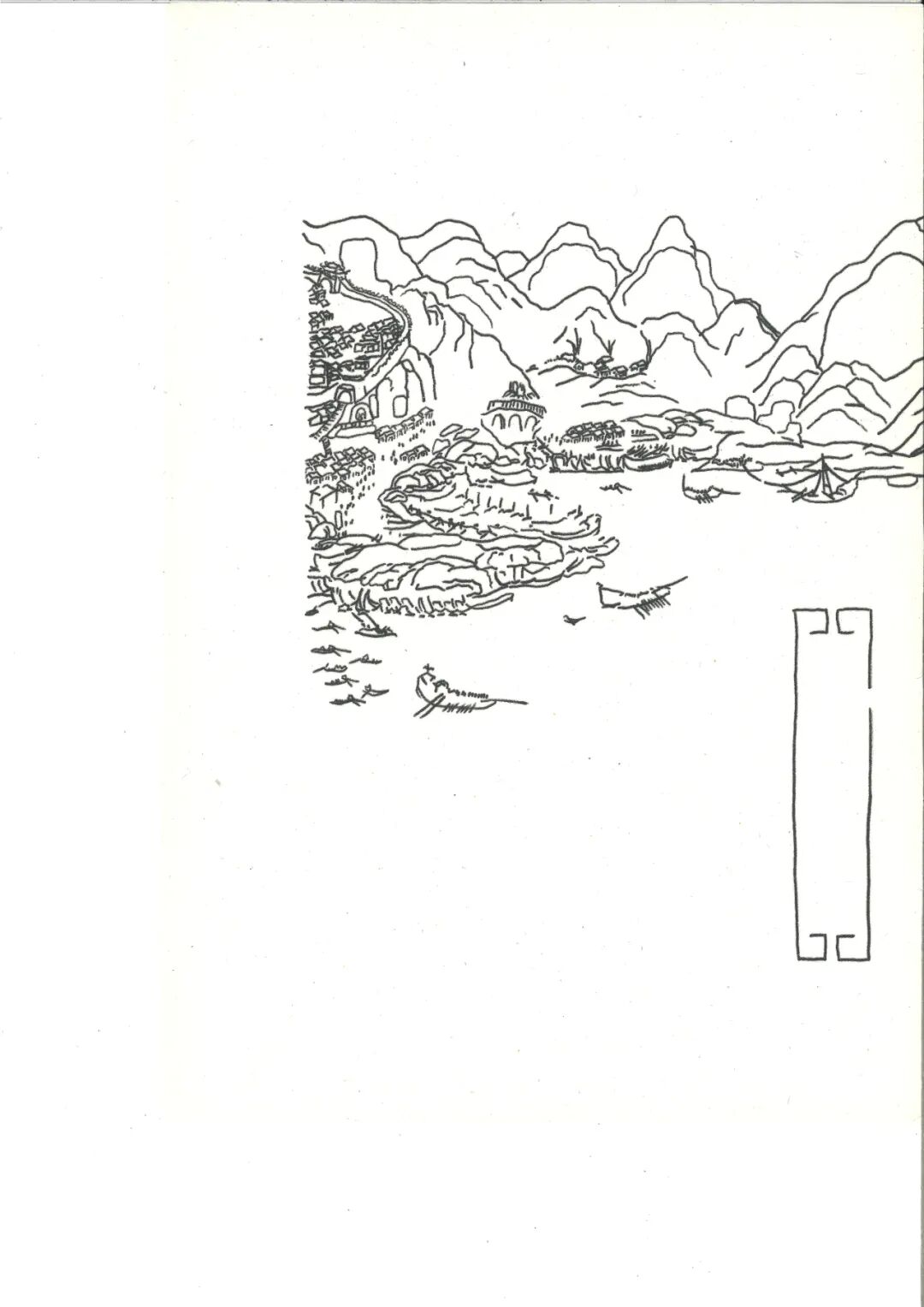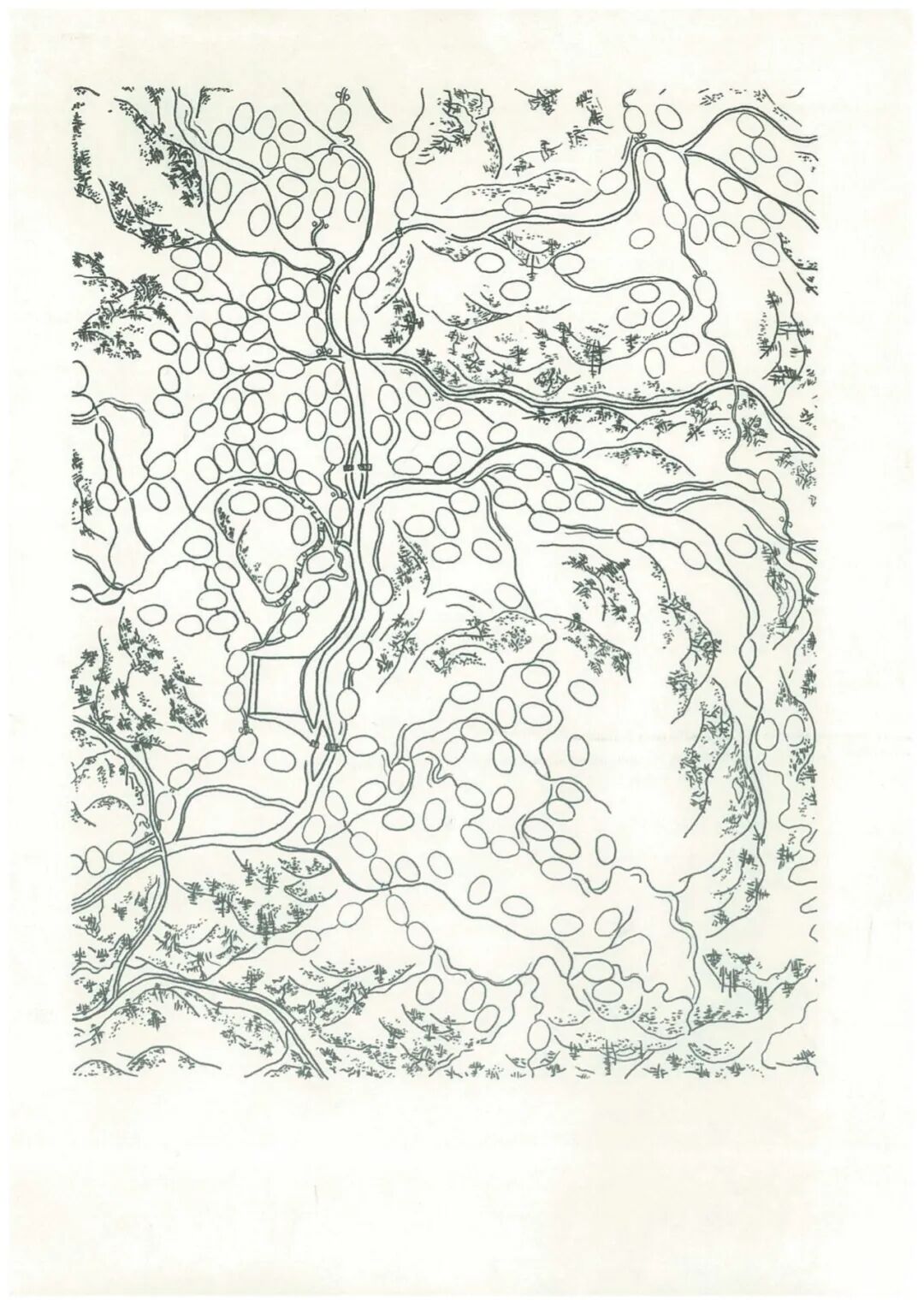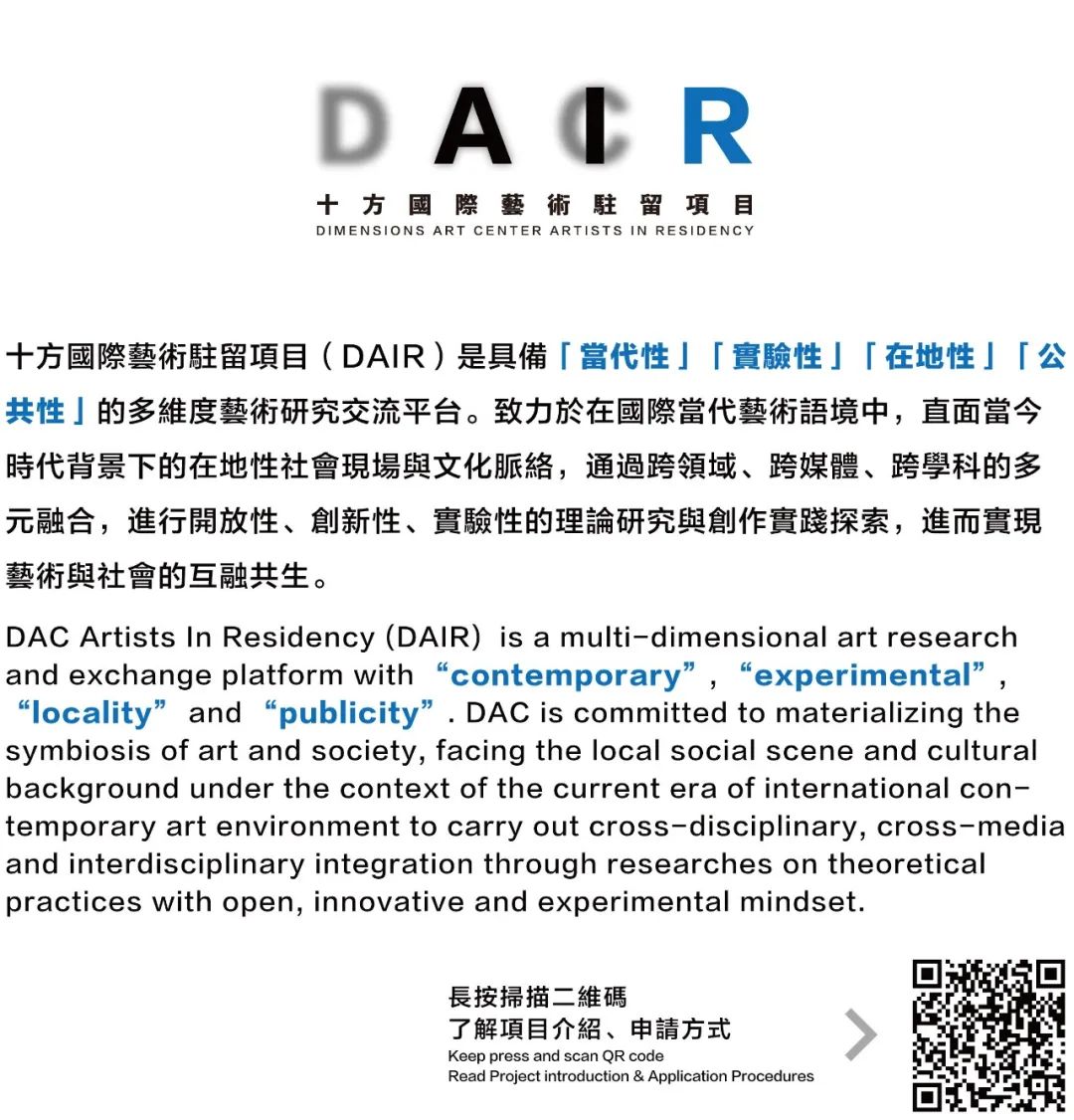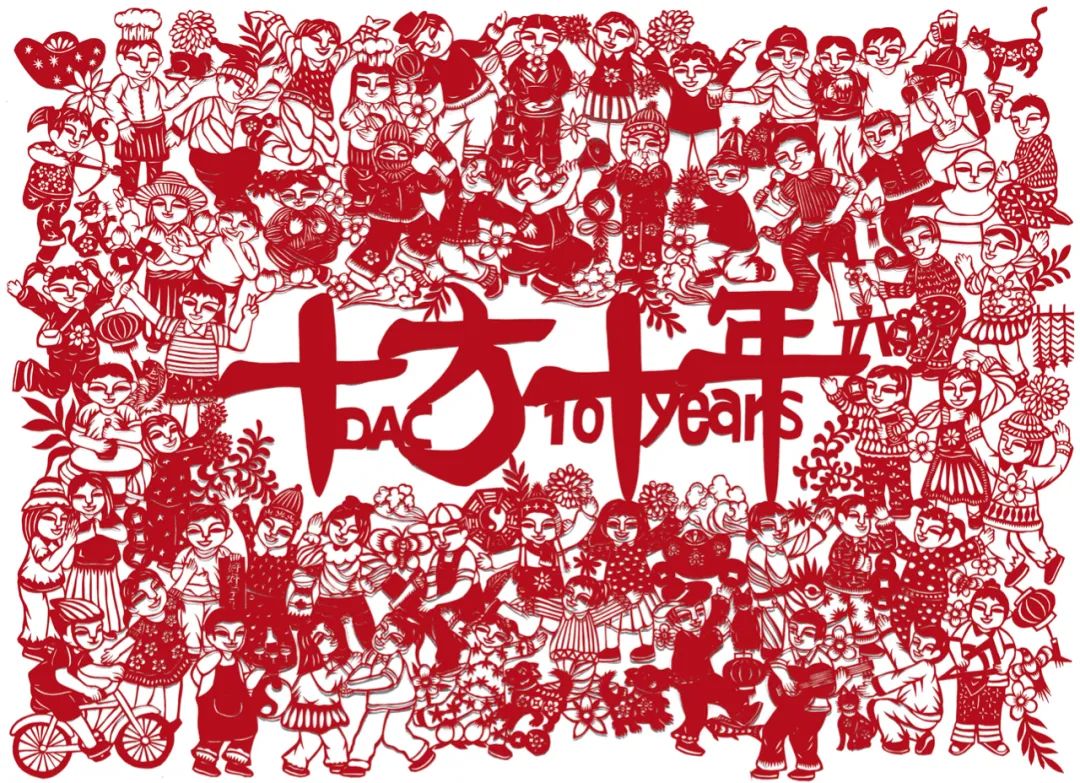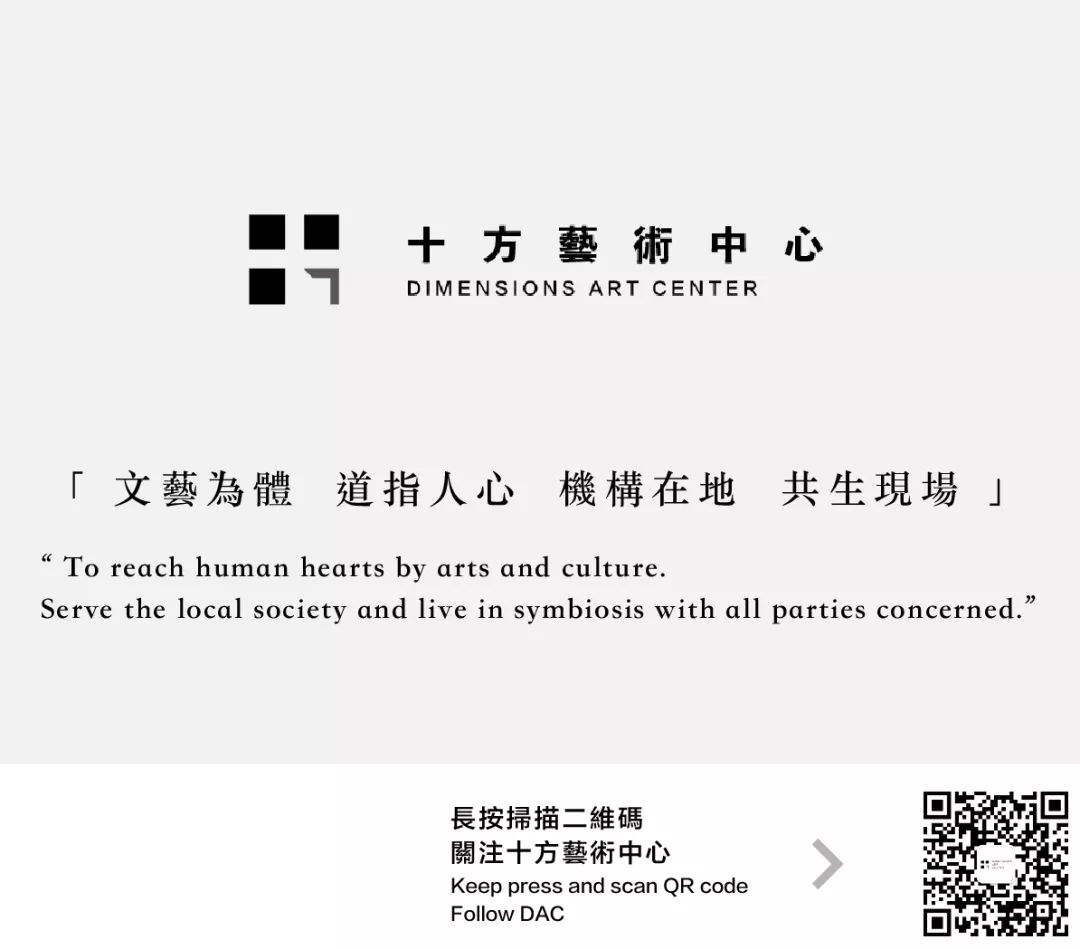
■ ■ 策展人前言 ■ ■
Curator’s Foreword
我不了解什麼日本文人畫。其實姑且是知道的。但這種“知道”更多是出於一種“反正日本有的東西都是從中國傳的唄”的自信。翻看伊藤的畫冊時,我嘴上說著斯國一斯國一,心裏沒當稀奇打量——我甚至懷疑日本人能不能讀得出來「破墨山水·雪舟等楊」這樣的作品名,更別說題字。但我眼前這些畫上沒有字。伊藤說她用臨摹把所有文字都拿掉了。
我不了解什麼中國文人畫。其實姑且是知道的。但這種“知道”更多是出於一種“反正中國有的東西也只有中國人懂唄”的豁達。臨摹字畫一體的作品時,“把文字去掉”也同時意味著“把畫面留下”。我好像沒這麼看過文人畫,或者說我好像沒“能夠”這麼看過文人畫。河山花鳥蟲魚,過去現在未來。
我不了解什麼文人畫。其實姑且是知道的。但這種“知道”更多是出於一種“反正美術史裏是這麼寫的唄”的博學。伊藤坐輕軌看到個標語覺得好,說用這個當展覽標題。她看不懂,但覺得重複得有趣。我覺得確實,越懂字反而越不懂什麼有趣了。
我不了解什麼。日本人也是中國人也是,在素材網搜索“寫意山水花鳥圖片無浮水印免費”然後放進《我的同事我的感悟》裏的人也是。伊藤也是,日本人讀中文——認字認一半。她興致勃勃地問我裏邊這些山水圖都是和長江文化有關的是不,我說你能相中這本冊子,那你來中國這趟真不虧了。
実は、少しは知っているつもりだった。だがその「知っている」は、どちらかといえば「どうせ日本にあるものは全て中国から伝わったんでしょ」という自信に由来していた。伊藤のポートフォリオをめくるとき、口では「すごい、すごい」と連発しながら、心の中では別に珍しいとも思っていなかった――そもそも日本人に「破墨山水・雪舟等楊」のような作品名や、ましてや賛が読めるのかどうかさえ疑っていた。しかし、今目の前にあるこれらの絵には、文字がない。伊藤が、なぞりによって全ての文字を取り切ったのだという。
実は、少しは知っているつもりだった。だがその「知っている」は、どちらかといえば「どうせ中国のものは中国人にしか分からないんでしょ」という闊達に由来していた。言葉と絵が一体となった作品をなぞるとき、「切り取り」ことは同時に「取り残し」ことを意味する。私はこんなふうに文人画を見たことがなかった。あるいは、こんなふうに文人画を「見ることができ」なかったのだろう。山河と花鳥と虫魚、過去と現在と未来。
実は、少しは知っているつもりだった。だがその「知っている」は、どちらかといえば「どうせ美術史にはそう書いてあるんでしょ」という博学に由来していた。伊藤は駅で見かけた標語が気に入って、それを展覧会のタイトルに使いたいと言った。彼女には意味は分からないが、繰り返されるリズムが面白いのだという。確かにその通りだ、と私は思う。文字を理解すればするほど、かえって面白さが分からなくなるのだ。
日本人も中国人も、素材サイトで「写意 山水花鳥 イメージ 透かしなし 無料」と検索して《我的同事我的感悟》に貼り付ける人たちも。そう言えば伊藤もそうだ。日本人が中文を読む――中途半端。彼女は楽しそうに、この冊子に載っている山水図は長江文化と関係があるのかと私に聞いてきた。そして私はこう言った。「あなたがこの冊子を気に入ったなら、今回の中国への旅は本当に有意義すぎ——」
I know nothing about Japanese literati painting.
Well, that’s not entirely true—I kind of do. But this “knowing” comes more from a place of confidence that says, “Anyway, everything in Japan pretty much came from China.” When I flipped through Ito’s artbook, my mouth was saying “Sugoi, sugoi,” but in my heart, I wasn’t really impressed—I even doubted whether Japanese people could actually read a title like 「破墨山水・雪舟等楊」, let alone the inscriptions. But the paintings in front of me had no words. Ito said she removed all the text by tracing.
I know nothing about Chinese literati painting.Well, that’s not entirely true—I sort of do. But this “knowing” is more like an easygoing attitude: “Anyway, anything from China, only Chinese people can truly get it.” When you trace a work where words and images are one, “removing the text” also means “leaving the image behind.” I realized I’d never looked at literati painting this way, or maybe I’d never been able to. Landscapes, flowers and birds, bugs or fish—past, present, future…
I know nothing about literati painting.
Well, that’s not entirely true—I guess I know a little. But it’s the kind of “knowing” that’s like, “Anyway, that’s what it says in the art history books.” Ito saw a sign she liked on the light rail and said she wanted to use it as the exhibition title. She doesn’t understand it, but she finds the repetition fun. And I think she’s right—the more you understand the words, the less you understand what’s interesting.
I don’t really understand anything.
Not Japanese people, not Chinese people, not even the kind of person who Googles “free/watermark-free/impressionist/landscape bird-and-flower/images” and pastes them into their “PowerPoint.” Ito’s like that too—a Japanese person reading Chinese: only understands half the characters. She asked me excitedly whether all these landscape images were related to Yangtze River culture. I said, “If you like this book that much, then your trip to China was definitely worth it.”
自從來到重慶,我便一直處於一種迷失的狀態。或是因想知曉這座城市是否存在盡頭,信步而行,卻輕易踏入死胡同;亦或是自輕軌1號線依次換乘至18號線,自覺已抵達遙遠處,歸途竟未滿一小時。
平日裏,我的創作以日本文人畫為基底,剔除其文字部分,僅描摹圖像軌跡。這些文字與繪畫原本密不可分——對文人畫而言,“描繪的是什麼”這一問題至關重要。然而從某個時代起,這種形式逐漸在美術領域被視為次要的存在。在當今世界,不知這些關係又處於何種狀態。
在過去,文人畫自華夏傳入了東瀛,在日本本土經歷了被模仿與解讀。
在重慶,我邂逅了一本蒙塵的冊子。冊子裏字畫兼備。秉著對「漢字」的瞭解,我誤會其是一本和長江文化有關的畫冊,便開始剝離其文字,進行描摹。
後來才知,這本“和人未聞,漢人不問”的冊子,只是拿些山水花鳥來作飾罷了。
この度、中国重慶市の「十方艺术中心」(Dimensions Art Center, DAC)にて個展を開催いたします。
この街に行き止まりがあるのか知りたくて、歩いてみたらあっさり袋小路に入ったこと。1号線から18号線まで順番に乗り継いで随分遠くまで来たと思ったのに、帰りは1時間もかからなかったこと。
私は普段、日本の文人画の文字の部分を切り取り、絵の部分だけをなぞり取っています。それらの言葉と絵は切って離せない関係にありました。文人画にとって、その山がその山であることが大切なことでした。しかし、ある時代に、言葉と絵は分けられていくこととなります。そして今、これらの関係はどうなっているでしょうか。
かつて、文人画という形式は中国から伝わり、日本でも手探りで描かれていくこととなりました。
そして私は重慶で、埃を被った一冊の冊子を見つけました。漢字が読めるからと、私の勘違いから文字を切り離してなぞり取ったその冊子は「日本人は読めない、中国人は読まない。」ものだそうです。
This time, I will hold a solo residency exhibition at the Dimensions Art Center in Chongqing, China.
Since arriving here, I’ve drifted in a kind of bewilderment.
I walked with no aim but to learn whether this city had an end, until I slipped into a dead-end street; I rode the light rail from Line 1 all the way to Line 18, believing I’d traveled a great distance, only to find the journey back took less than an hour.
In my daily practice, I begin with Japanese literati paintings, erasing the Moji and retracing only the images.
Words and Wash once breathed with ink as one, yet became divided in the flow of time. —for literati painting, what was depicted held profound significance. Yet from a certain period onward, this form began to be regarded as a lesser practice within the arts. And now, I wonder what has become of these relationships in the contemporary world?
Long ago, this art wandered from「中国」to「日本」, where it was tenderly unraveled and remade.
In Chongqing, I stumbled upon a booklet veiled in dust, filled with words and imagery.
Moved by a familiarity with「漢字」, I mistook it for commentary on the Yangtze River. Only later did I understand this was a volume “unread by Japanese, unasked after by Chinese,” just adorned with faint mountains and pale birds as decoration.
MIND YOUR STEP CAUTION! SLIPPERY
MIND YOUR STEP CAUTION! SLIPPERY
Noe Ito (JP) Solo Resident Exhibition
展覽開幕 Opening:2025.8.24(週日) 19:30
2025.8.25-9.7 14:00-18:00
(每週五至週日|Every Fri. to Sun.)
Exhibition Hall A, Dimensions Art Center, Chongqing, China
藝術總監|Art Director:曾途 Zeng Tu
展覽策劃|Curator:杜鎔勛 Du Rongxun
執行統籌|Coordination:劉暢 Liu Chang
展覽協助|Assistance:劉春利 Liu Chunli 胡克 Ben
海報設計|Poster Design:杜鎔勛 Du Rongxun
駐留藝術家簡歷︱Resume of Artist:
出生於日本三重縣,現生活、工作於日本東京。
Born in Mie prefecture, Japan, now live and work in Tokyo, Japan.
伊藤乃愛運用描摹、複製與重複等簡約技法創作繪畫與雕塑。其日語母語者的身份深刻塑造著這些屬於她的創作語彙。在她的實踐中,語言、繪畫與觀察之間存在著不可分割的系統性聯繫。
Noe Ito creates paintings and sculptures using simple methods such as tracing, copying, and repeating.At the same time, her life as a Japanese speaker strongly influences her work. Within her practice, integral systemic connections exist between language, painting, and seeing.
藝術家以往作品︱Previous works of the artist:
landscape painting=broken ink landscape(Sesshu Toyo)
在這個正在進行的系列中,我只是在臨摹文人畫和詩意畫。由於我用的是複寫紙臨摹,所以它們變成了簡單的線條。
In this series, which is currently in progress, I just trace the literati paintings and poetic paintings. They become simple lines because I copy with carbon paper.
在文人畫中,畫與詩是相互關聯的。而在某個特定時期,它們被分離開了。如今又是如何呢?
In the literati paintings, pictures and words are linked. And in a certain period, they have been separated. How about now?
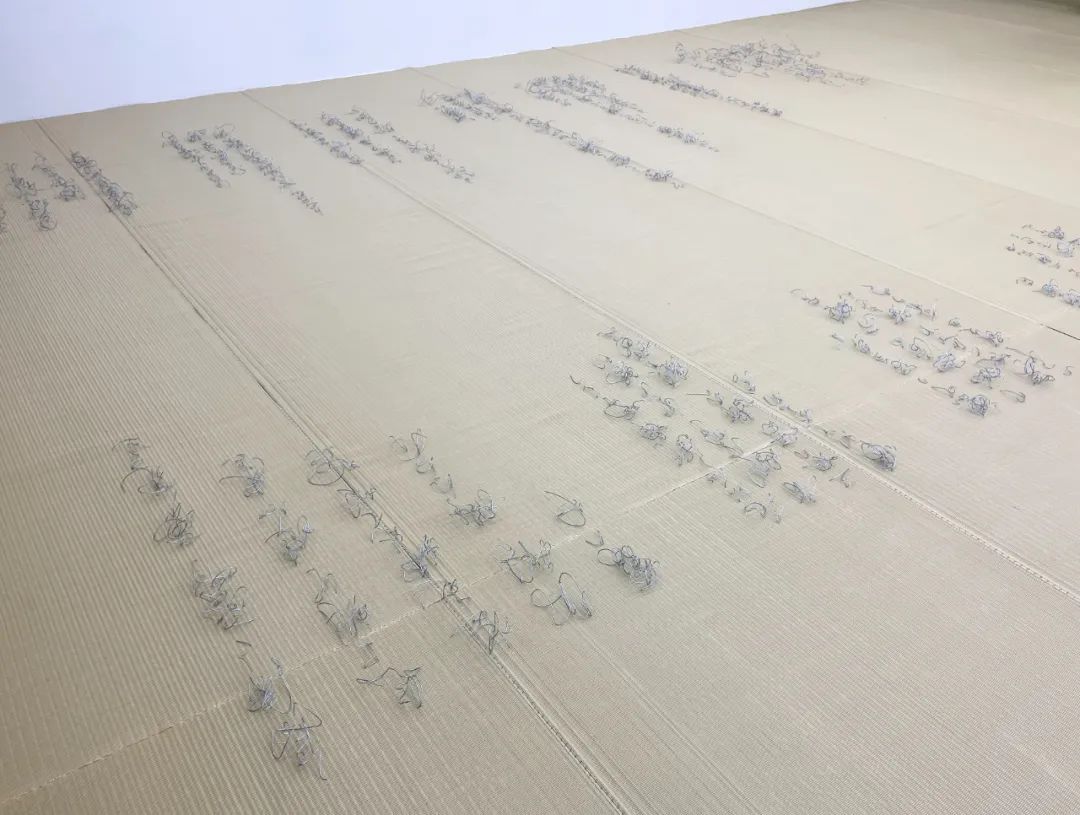
![]()
![]()
Harry He Likes Beer But CanNot Obtain Food
我將金屬絲作為載體,使諸如《伊呂波歌》之類的助記符得以呈現。
I wrote mnemonics such as iroha-uta using wire and made them exist.
我認為,當我們把文字當作詞語來看待——當我們閱讀時,許多時候我們並不會去真正關注文字本身。為了回應這一點,我將文字的線條本身提取為繪畫線條,並將其製成了三維的複製品。
To my way of thinking, when we look at written characters as words, that is, when we read, we do not look at the characters themselves. In response to that, I made three-dimensional reproductions of character line when I see them as if it were a drawing line.
與此同時,我也意識到,即便只是處於觀看,我們也是在對詞語和概念進行「使用」。
At the same time, I came to realize that even in the mere act of viewing, we are still “employing” words and concepts.
當我將原本具備明確含義的字符拆散時,還剩下什麼…也許能被感知到的是,他們曾是字詞。
When I break apart letters that originally had a definite meaning, what is left there. Maybe able to sense that they were words of some kind.
There is the experience of seeing and reading as if they were interrupting each other.
Shoho, Genroku, Tempo Shinano Country Map
這兩幅作品是自我上次於DAC開始短期駐留以來創作的。
These works that I began working on during my last residency at DAC.
我以一幅古地圖為對象描摹了一張副本,並跳過了其上所標註的文字,唯獨留下看似無用的部分。
I traced a copy of an old map, except for the text traced on it. Only what seems useless remains.
這份刻錄著不復存在的場所,對我而言無跡可尋的副本,對地方民眾而言好似一望而知。
For me, that place is no longer anywhere. But the inhabitants easily find something.
郵箱 : info@chongqingdac.org
Instagram:dimensionsartcenter

![]()
![]() Website : chongqingdac.org
Email : info@chongqingdac.org
Instagram:dimensionsartcenter
Facebook : Chongqing Dimensions Art Centre & Chongqing Artists In Residency
Address : Huangjueping GuanJiaLin 190, Jiulongpo, Chongqing, CN.
Website : chongqingdac.org
Email : info@chongqingdac.org
Instagram:dimensionsartcenter
Facebook : Chongqing Dimensions Art Centre & Chongqing Artists In Residency
Address : Huangjueping GuanJiaLin 190, Jiulongpo, Chongqing, CN.
